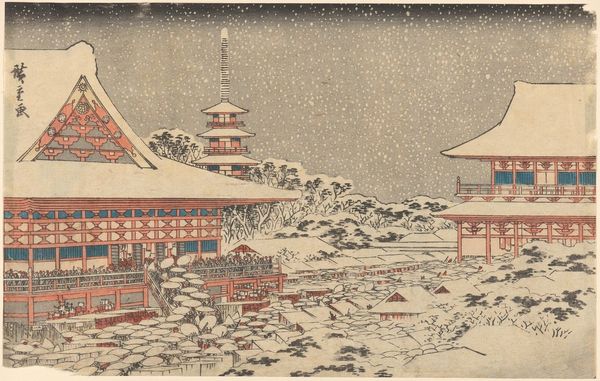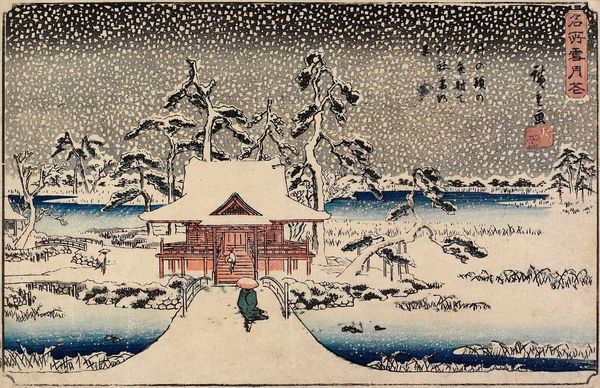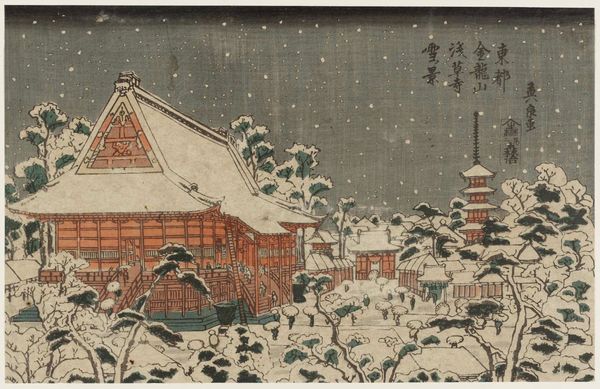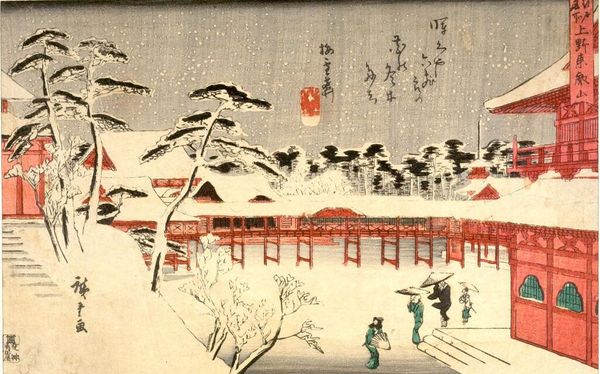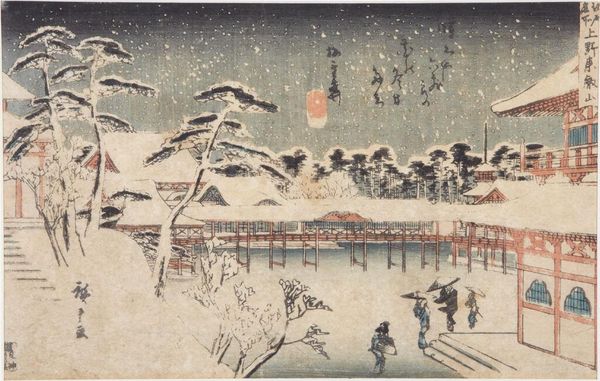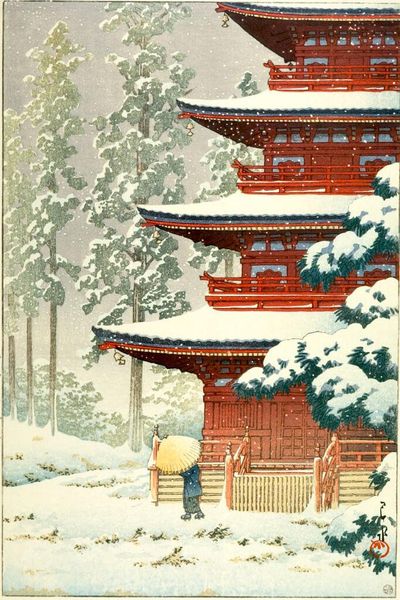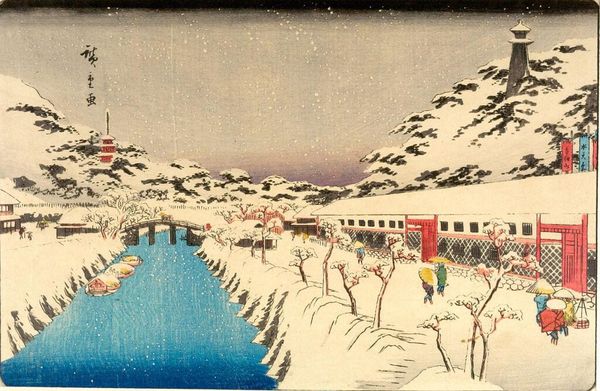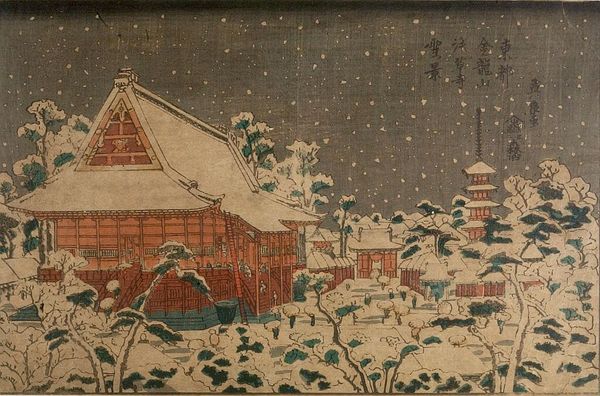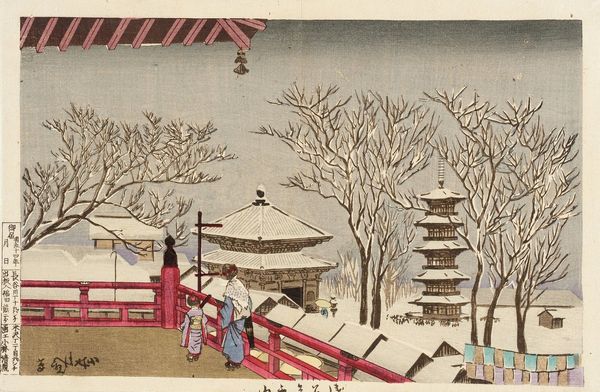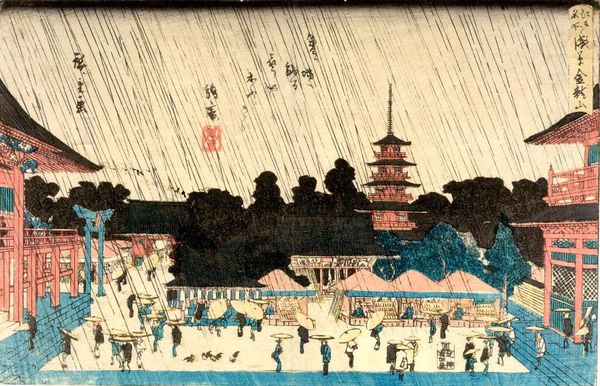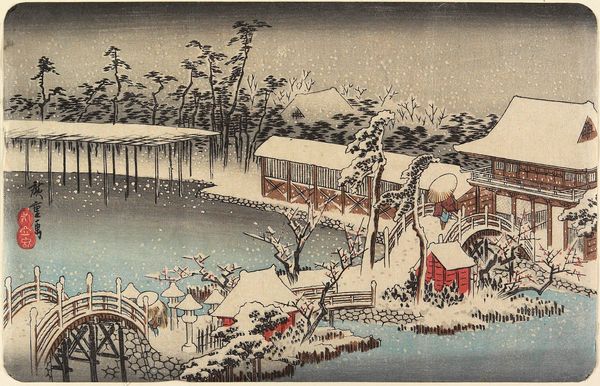
ASAKUSA TEMPLE IN THE SNOW, from the series Famous Places of the Eastern Capital (TÅto meisho) c. 19th century
0:00
0:00
Copyright: CC0 1.0
Curator: Immediately, I notice a stark contrast between the tranquility of the snow and the bustling scene beneath the temple's eaves. Editor: This is Utagawa Hiroshige's "Asakusa Temple in the Snow," a woodblock print from his series "Famous Places of the Eastern Capital." It really captures the cultural landscape of Edo-period Japan. Curator: Absolutely. The snow acts almost as a veil, softening the edges and momentarily equalizing the social space. How were these prints typically produced? Editor: Hiroshige designed the image, then specialist woodblock carvers and printers would have brought it to life. The labor and skill involved shouldn't be overlooked. Curator: It speaks volumes about the interconnectedness of art and society. Viewing this today invites contemplation on the impermanence of both beauty and social hierarchies. Editor: Seeing the final product, it is easy to forget the collaborative process and the social structures that made its production possible. Curator: Understanding the socio-political context enriches our interpretation, providing us with a lens to examine the intersections of power, labor, and artistic expression within this beautiful print. Editor: Indeed. By considering both the artwork and its making, we get a fuller picture of its place in history and our own.
Comments
No comments
Be the first to comment and join the conversation on the ultimate creative platform.
